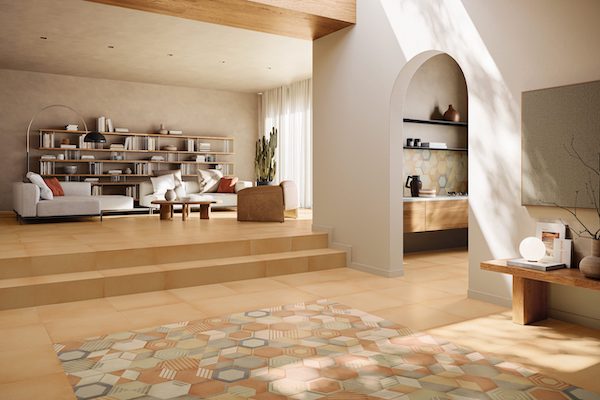
Do you need to install a pergola on your terrace or a medicine cabinet in your bathroom? Then you need to drill through the tiles. You should be aware that even the most seasoned DIY enthusiasts are afraid of breaking the tiles when drilling into them. To avoid the unfortunate consequences, you need to adopt a number of tips and get the right equipment. The following is a summary of tips for drilling holes in tiles in complete safety. You’ll also find out about the equipment you need to do the job safely.
Why drill into tiles?
Tiles are highly resistant to damp and intensive use, making them ideal for damp rooms such as kitchens, shower rooms and bathrooms. When laying tiles in these rooms, it’s a good idea to prepare the holes needed to run pipes for taps and electrical boxes.
However, you may need to add decorative items or other accessories (wall shelves, an electric towel rail, a medicine cabinet, a mirror, etc.). Similarly, to install plumbing equipment such as a toilet, tap or shower screen, you’ll need to drill through the wall or floor tiles. Depending on your installation requirements, you may need to drill small holes using a drill press, or large-diameter holes. In the latter case, you’ll use a hole saw and a drill bit.
The risks of drilling into tiles
Tiles are more difficult to drill than concrete, breeze block or plasterboard. This is because the surface of the material is often smooth, which makes drilling somewhat difficult and delicate. Tiles can crack or split. If this happens, you’ll have to replace it, which is not as easy as when laying tiles on tiles. To avoid such risks, you need a minimum of know-how.
The tools to use
Drilling into tiles without breaking them requires the right tools. You need to be properly equipped. A drill with variable speed control will do the trick if you want to drill small holes. It’s the speed of rotation of the drill bit that determines the final result. You should therefore drill gradually and slowly, then increase the speed once the enamel has started to form. Drilling quickly from the outset risks shattering the tile. If you only have a percussion drill, you can use it without triggering the percussion function.
Need to make large-diameter holes? The hole saw is the tool for the job. In this case too, you should drill slowly and gradually increase the speed.
As for the choice of drill bit, this depends on the type of tiling to be drilled. An earthenware drill bit with a diamond segment head is ideal for cutting full-body tiles, glazed stoneware, porcelain stoneware, etc. On the other hand, a concrete drill bit with a tungsten carbide insert is an essential tool for drilling ceramic tiles.
How do you drill tiles like a pro?
Do you want to fix an accessory to your kitchen splashback or install a piece of furniture in the bathroom? Tiles need to be drilled! This job can have regrettable results if you don’t know how to go about it. The know-how needed to carry out this task like a pro can be transferred in a few tips.
Drilling tiles before laying
If you haven’t yet laid your tiles, it’s best to drill them beforehand. It’s important to pay attention to the diameters and locations of the holes. The holes must correspond to the planned position of the furniture, tap or pipe.
Before you start, place the tile on a thick wooden board. This material helps to absorb the vibrations caused by the drill. It’s best to dampen the tile to prevent overheating and breakage. Next, place adhesive tape over the hole to prevent the drill from slipping and splintering near the hole. Start drilling slowly until you get through the layer of glaze, then increase the speed to drill all the way through. Finally, you can place the drilled tile on the wall where you intended.
Another tip: if you need to make a hole in thick tiles, it’s best to drill the tile down to a third of its thickness. Turn it to the other side and continue drilling in the same place.
Drilling through tiles that have already been laid
Do you want to perforate a tile that has already been laid? The technique is basically the same. Start by fixing a marker with a black felt-tip pen and covering it with adhesive tape. Then drill slowly, increasing the speed as you go. Once you’ve drilled a hole in the tile, clean the area with a hoover.
Now you need to replace the drill bit with one suited to the material of your wall. Whether it’s brick, plaster, plasterboard or concrete, the diameter of the drill bit should be slightly smaller than the diamond drill bit used to perforate the tiles.
A final word of advice
Drilling into tiles before they are laid, or drilling into tiles that have already been laid, requires care and a number of safety precautions. Before you start work, don’t forget to wear protective goggles. The aim is to avoid injury from any splinters in the tiles. This will also protect you from dust being thrown up during drilling. Now that you’ve followed the advice above, everything should go smoothly.




